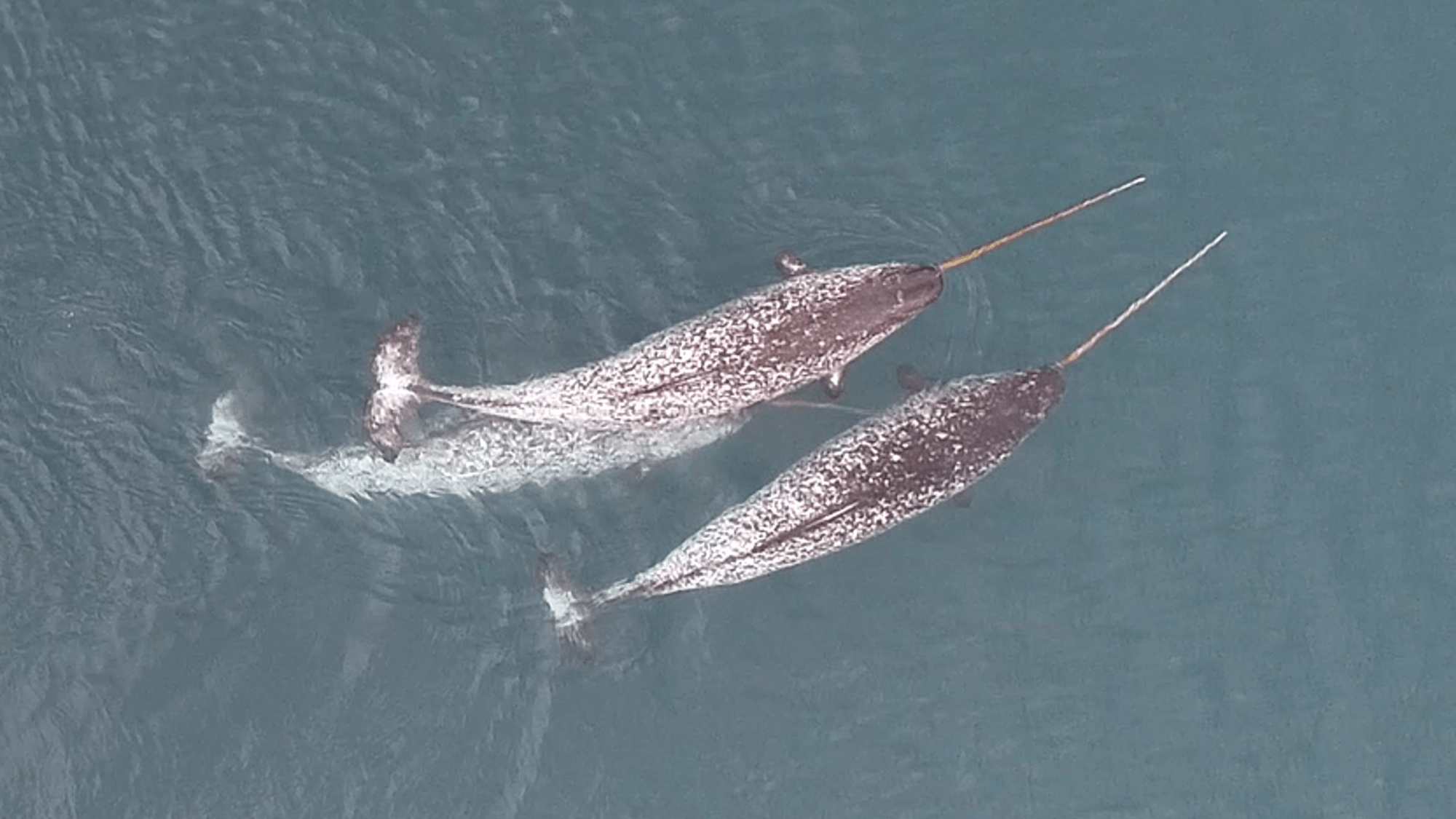Gadgets
Narwhals spotted using tusks for non-mating fun

Narwhals (Monodon monoceros) are known for their long, spiral tusks that resemble something out of a fairy tale. These tusks, primarily found in male narwhals, can grow up to 10 feet in length. These gregarious whales typically travel in pods of two to 10 individuals but are elusive and challenging to study in the wild. While scientists believe the tusks are mainly used in mate competition, new drone evidence suggests that narwhals also use their tusks for foraging, exploration, and play.
According to Greg O’Corry-Crowe, a biologist specializing in marine mammals at FAU Harbor Branch and a National Geographic Explorer, narwhals exhibit a behavior known as ‘tusking,’ where they raise their tusks vertically out of the water in a ritualistic display. However, recent observations have shown that narwhal tusks have other unexpected uses, including interacting with and potentially stunning or killing Arctic char fish.
Using drones, an international research team in the Arctic observed narwhals using their tusks to investigate, manipulate, and impact the behavior of Arctic char fish. They documented 17 distinct behaviors in narwhals, shedding light on the interactions between these Arctic mammals and the surrounding fish and birds. The team also observed instances of play behavior, social learning, and personality differences among individual narwhals.
The researchers noted the remarkable dexterity, precision, and speed at which narwhals use their tusks to interact with their environment. The tip of the tusk was used to interrogate and manipulate targets, such as fish, in short bursts. The team observed both competitive and communicative interactions between narwhals, suggesting complex social dynamics among the whales.
As the Arctic faces rapid environmental changes, understanding how narwhals adapt to these shifts is crucial. Field studies using innovative tools like drones provide valuable insights into narwhals’ behavior and responses to changes in their habitat without disturbing them. These observations help scientists gather essential data on how narwhals are adapting to environmental changes in the Arctic.
Studies like these are crucial for gaining insight into how global warming is impacting these elusive animals.
-

 Destination8 months ago
Destination8 months agoSingapore Airlines CEO set to join board of Air India, BA News, BA
-

 Breaking News10 months ago
Breaking News10 months agoCroatia to reintroduce compulsory military draft as regional tensions soar
-

 Gadgets4 months ago
Gadgets4 months agoSupernatural Season 16 Revival News, Cast, Plot and Release Date
-

 Tech News1 year ago
Tech News1 year agoBangladeshi police agents accused of selling citizens’ personal information on Telegram
-

 Productivity12 months ago
Productivity12 months agoHow Your Contact Center Can Become A Customer Engagement Center
-

 Gadgets4 weeks ago
Gadgets4 weeks agoFallout Season 2 Potential Release Date, Cast, Plot and News
-

 Breaking News10 months ago
Breaking News10 months agoBangladesh crisis: Refaat Ahmed sworn in as Bangladesh’s new chief justice
-

 Toys12 months ago
Toys12 months ago15 of the Best Trike & Tricycles Mums Recommend























